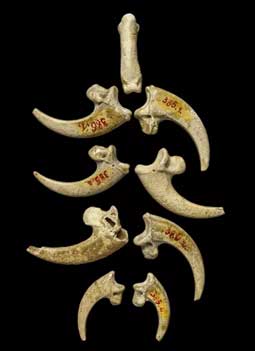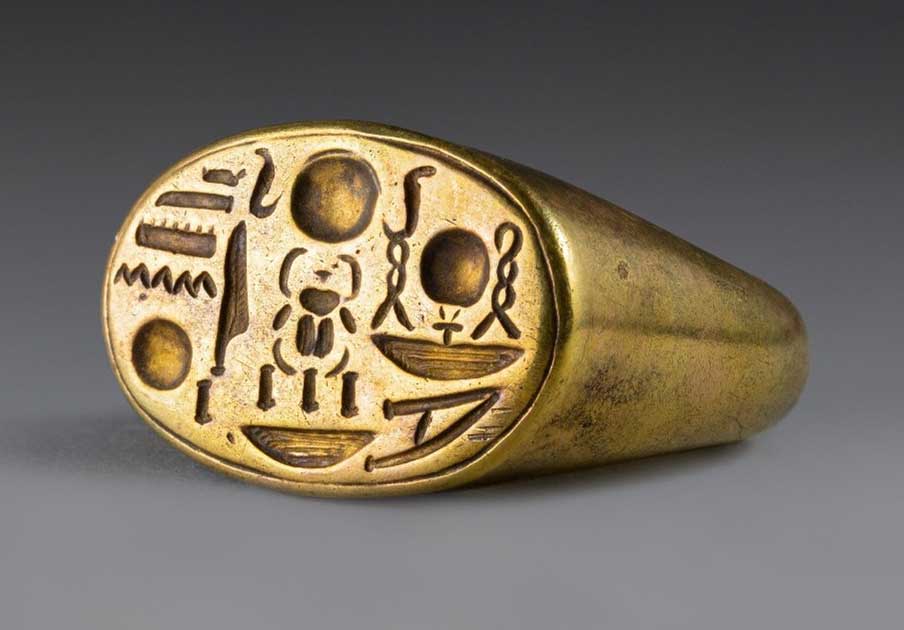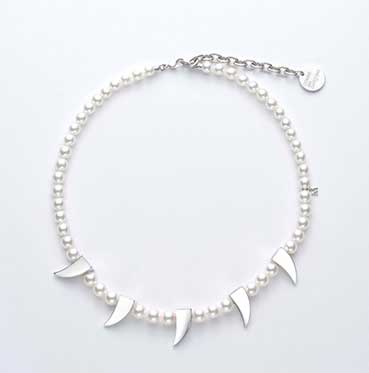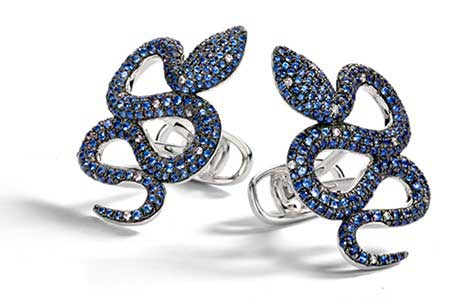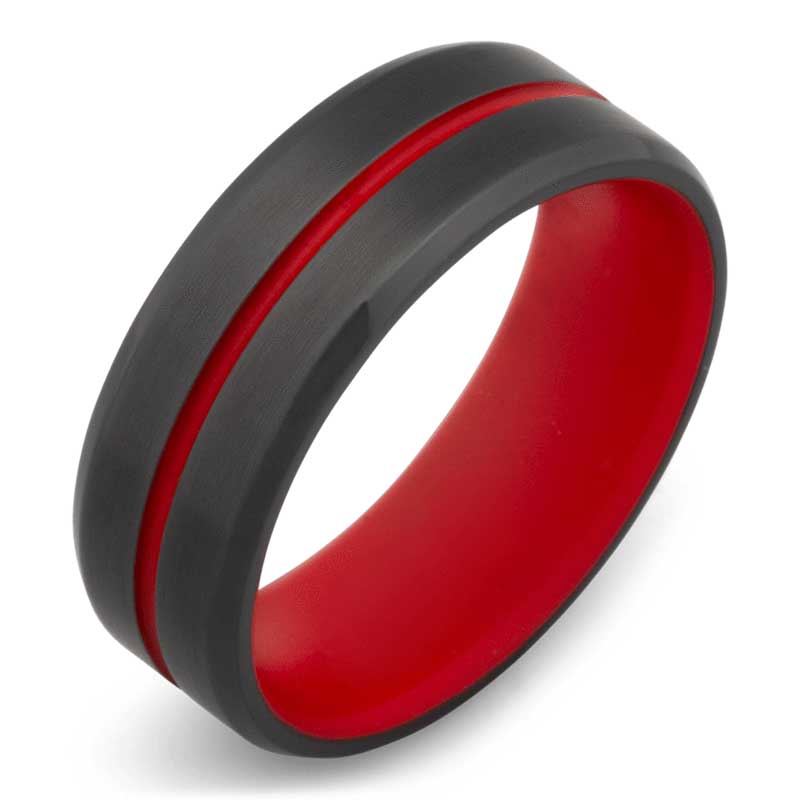Men’s Jewelry — Passing fad or wave of the future?
Jewelry magazines are saying the next big thing is jewelry for men.
In modern America we’re accustomed to thinking of women as the bejeweled ones, the fashionable and colorfully ornamented. But men have been wearing jewelry for thousands of years.
Historians of fashion cite the laurel wreathes worn by Greek athletes. Dipping further into the past, archeologists have found, in a 130,000-year-old Neanderthal cave, eagle talons with holes suggesting they had been strung together as a necklace for the successful hunter.
A glimpse of history
Eagle talons pierced with holes for stringing, Neanderthal period, 130,000 years ago
(Image credit:
Luka Mjeda, Zagreb)
A gentleman of the Renaissance might well have a rope of pearls hanging from his neck to display his wealth and style. Updating things a bit, Tiffany’s website advertises that popular men’s accessories in the late 1880s “included dog’s head umbrellas, gold pocket watches and sterling silver spurs.”
Even today the traditional ceremonial garb of royalty, from jeweled crown to glittering buttons to signet ring, lives on as an exaggerated spectacle, though it has a familiar purpose. It does what jewelry always does: calls attention to the wearer, attests to the wearer’s wealth, power, and stature.
Contemporary retailers may not be offering silver spurs, but interested male customers can see new jewelry beyond Rolex and wedding band.
Contemporary Men’s Jewelry
The “new trend” toward men’s jewelry may be just advertisers’ wishful thinking to boost sales. But if it’s an idea whose time has come, insurers should be ready.
Some considerations
Are men more likely than women to have questionable losses?
Men typically have less sentimental attachment to their jewelry than women do. Women tend to associate their jewelry with major events in their lives—wedding, anniversary, etc. Women often receive jewelry as a gift. Their jewelry then comes to represent the event and the relationship with the giver.
Men are more likely to associate their jewelry with status. Lacking emotional significance, the jewelry may be valuable but it's not seen as irreplaceable. Thus, men are likely to be more casual in safeguarding their jewelry. This is borne out by insurance records that show a higher loss ratio for men's jewelry.
There is gender-blending in jewelry as in other aspects of fashion and society.
Many women are wearing large watches, while some men are choosing watches in smaller sizes traditionally made for women. Will an expanding market for “men’s” jewelry also attract female consumers? It may be that the designation of “lady’s” or “men’s” jewelry will cease to be relevant.
Is it a bubble?
Will we see a growing range of men’s jewelry on the market, or will the fad just fade away? As we discussed in The Price of Fad, designers as well as jewelry styles can go out of fashion, causing the jewelry to abruptly lose value.
Word in the industry is that entire businesses are being based on cuff links, for example. Is that likely to last?
When a fad runs its course, there’s often a rise in mysterious disappearance claims.
How much of such new men’s jewelry will be insured?
Will men’s bracelets and necklaces take off as status symbols, like fine watches? Or will buyers consider such jewelry more as costuming than treasure, and go for less expensive versions? We’ll see.
FOR AGENTS & UNDERWRITERS
Jewelry fads emphasize the importance of having a new valuation for jewelry every couple of years. Jewelry, like other material objects, takes its value from the marketplace. When people no longer want it, its value falls like a rock.
FOR ADJUSTERS
A settlement is based on value at time of loss. This is especially relevant in regard to trendy jewelry. Yesterday’s fad jewelry may be worth only the value of its metal and gem material. On the other hand, a relatively unknown designer may become famous and his works may appreciate in value.
For an accurate and recent valuation, be sure to consult an appraiser trained in contemporary and vintage jewelry, so the insurer does not overpay or underpay a loss.
©2000-2025, JCRS Inland Marine Solutions, Inc. All Rights Reserved. www.jcrs.com


